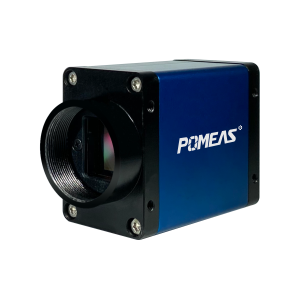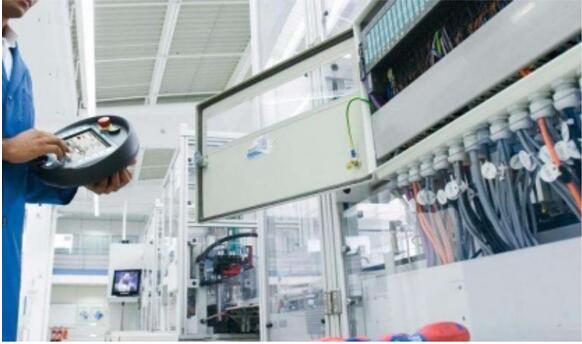In today's highly automated and intelligent industry, scientific research and many professional fields, vision inspection technology plays a pivotal role, and CCD cameras and CMOS cameras as the core components of the vision system, how to correctly select the type of a number of practitioners faced with the key decision.


Imaging Quality Core Claims
1. Resolution requirements:
① For applications that require fine capture of minute target details, such as electronic chip inspection and defect screening of precision machined parts, high resolution is a primary consideration. ccd cameras typically provide clearer and sharper image edges at the same pixel size, thanks to their excellent charge transfer consistency, ensuring that every detail is visible. For example, in semiconductor lithography, CCD cameras can accurately distinguish nanometer-scale line defects, ensuring chip quality.
CMOS cameras have made rapid progress in resolution improvement in recent years, and some high-end products are now comparable to CCD cameras. However, if you are working on a project that requires high pixel-level accuracy, such as texture restoration for cultural relics, a careful comparison of pixel uniformity metrics across different models of CCD cameras can help you filter out the best solution.
2. Color accuracy
① In the advertisement printing, artwork reproduction, food appearance inspection and other industries with high sensitivity to color, color reproduction accuracy is crucial. ccd cameras, relying on the mature manufacturing process, with the color filter array design and post color correction algorithms, are able to present extremely realistic and natural color space, making red more vivid and blue more pure, so that the reproduced artwork will be close to the original texture.
② CMOS cameras were limited by the effect of the transistor layout within the pixel on light absorption, and in the early days there was a certain amount of color deviation. Today, however, as manufacturers invest in color management technology, some CMOS cameras optimized with new Bayer arrays and built-in advanced color calibration modules are able to achieve excellent color performance under everyday lighting conditions, meeting the needs of most commercial applications. When selecting a camera, you can evaluate its color performance by actually shooting a standard color card and comparing it to the official color card data.
Sensitivity and Dynamic Range Adaptation
1. Low light sensitivity
① Security monitoring in the night patrol, wildlife night observation and other low-light scenes, the camera is required to have excellent low-light capture ability. ccd camera because of its lower noise floor and efficient photon collection efficiency, in the low-light environment can extract more useful signals, even if the starlight is weak, but also can be clearly rendered to monitor the area dynamics, to protect the security of no dead ends.
② CMOS cameras have their own amplifiers to boost signal strength but are also prone to introducing noise. However, modern CMOS greatly enhances low-light sensitivity through back-illuminated technology, which allows light to shine directly onto the photodiode, reducing light loss. If your application is often in a dimly lit room or outdoors under moonlight, when considering low-light performance, you need to pay attention to the camera's sensitivity range as well as noise suppression characteristics, such as checking the noise test charts under different sensitivities to assist in judging the camera's dark imaging ability.
2. Dynamic range tradeoffs
① In the backlight shooting traffic monitoring (not only to see the driver inside the car, but also to capture the road outside the window under the bright light), welding process monitoring (melting pool light and the surrounding darker areas to take into account) and other complex lighting scenarios, the camera's dynamic range determines the richness of the image level. CCD camera by virtue of its linear charge transfer characteristics, in the highlights and the dark areas are able to maintain a stable response to effectively avoid overexposure and underexposure, so that the bright parts of the picture is not white, dark areas are not white, so that the image is not white, dark areas are not white. CCD cameras, by virtue of their linear charge transfer characteristics, maintain a stable response in both high light and dark areas, effectively avoiding overexposure and underexposure, and making the bright parts of the image not too white and the dark parts detailed.
CMOS cameras also realize a wide dynamic range in some models, thanks to local exposure adjustment within the pixel. When selecting a model, you can refer to the camera's dynamic range value, and actually simulate the lighting conditions of the application scene for shooting comparisons, to observe the degree of retention of strong light and low light areas, to ensure that the selected camera can cope with extreme lighting changes.
Speed and frame rate considerations
1. Data transmission speed
① High-speed automated production lines, such as level detection for beverage canning and code recognition for pharmaceutical packaging, require cameras to quickly transmit image data to the processor. CCD cameras traditionally use progressive scanning for transmission, which is relatively limited in speed, but newer CCDs, combined with high-speed interface technology, have significantly increased transmission rates. When evaluating, look at the camera's interface type (e.g., USB 3.0, GigE Vision, etc.) and its corresponding theoretical transmission bandwidth to ensure that it meets the production line's beat-to-beat requirements.
② CMOS cameras, based on their parallel read architecture, are inherently capable of faster data throughput, delivering pixel information quickly. For speed-critical applications, such as high-speed placement machine vision positioning for 3C products, CMOS cameras, together with cache, DMA and other technologies, can easily achieve high-speed continuous shooting of hundreds or even thousands of frames per second, providing smooth image sequences for high-speed dynamic scene detection.
2. Frame rate stability
In applications such as motion tracking and robot vision servoing in machine vision, the stability of the camera frame rate is as critical as the rhythm of the heartbeat. ccd cameras can maintain a highly consistent frame rate under stable light and suitable temperature, providing a reliable data base for motion analysis. However, during long periods of continuous operation or large environmental fluctuations, frame rate fluctuations may occur due to problems such as charge accumulation.
② Although CMOS cameras have the advantage of fast continuous shooting, due to differences in the operating state of each pixel, some pixels may experience a delayed response at high frame rates, affecting the overall frame rate stability. When selecting a camera, use professional frame rate testing equipment to simulate the actual working hours and environmental changes, monitor the camera frame rate curve, and select a camera model that can provide stable output under all working conditions to ensure smooth operation of the vision system.
Cost, power consumption and reliability trade-offs
1. Procurement costs
① For startups, small labs, or educational institutions with limited budgets, cost is a factor that cannot be ignored. Generally speaking, CCD cameras tend to be expensive due to their complex manufacturing process and relatively low yield rate, but their performance advantages in high-end imaging make them still have a solid market in professional-grade applications.
② CMOS cameras benefit from the large-scale integrated circuit manufacturing process, the cost is decreasing, and they are very cost-effective in the consumer and low-end industrial markets. If your project is in the early stages of research and development, and performance requirements are not the most stringent, choosing the right CMOS camera can satisfy your basic needs while effectively controlling costs and reserving capital for subsequent technology iterations.
2. Power consumption characteristics
① In battery-powered mobile monitoring equipment, UAV aerial photography, field research portable stations and other application scenarios, power consumption determines the endurance of the equipment. ccd cameras require additional drive circuitry to transmit charge, the overall power consumption is relatively high, which limits its use in energy-constrained environments.
② CMOS cameras are highly integrated, and the internal circuitry is optimized to reduce power consumption significantly. Some low-power CMOS cameras use dynamic power management technology to intelligently switch between standby and operating states to extend the time of continuous operation. When selecting a model, check the power consumption parameter table of the camera in detail, and select an energy-saving pioneer by combining the power supply mode and endurance requirements in the actual use scenario.
3. Reliability and life
① Industrial production sites are often faced with high temperature, high humidity, strong electromagnetic interference and other harsh environments, such as steel mills rolling line vision inspection, automotive paint shop quality monitoring. ccd cameras are relatively fragile structure, in extreme environments, the charge transmission channel may be subjected to interference, photodiode performance is prone to degradation, affecting the life of the camera.
② CMOS cameras are more adaptable to complex working conditions due to their robust silicon-based chip architecture and good anti-electromagnetic characteristics. At the same time, manufacturers have optimized the packaging process and increased heat dissipation design to further enhance the reliability of CMOS cameras. When selecting a camera, it is important to know the protection level (IPXX), operating temperature range, electromagnetic compatibility (EMC) certification and other indicators to ensure long-term stable operation under adverse conditions.
Product recommendation
TECHNICAL SOLUTION
MORE+You may also be interested in the following information
FREE CONSULTING SERVICE
Let’s help you to find the right solution for your project!


 ASK POMEAS
ASK POMEAS  PRICE INQUIRY
PRICE INQUIRY  REQUEST DEMO/TEST
REQUEST DEMO/TEST  FREE TRIAL UNIT
FREE TRIAL UNIT  ACCURATE SELECTION
ACCURATE SELECTION  ADDRESS
ADDRESS Tel:+ 86-0769-2266 0867
Tel:+ 86-0769-2266 0867 Fax:+ 86-0769-2266 0867
Fax:+ 86-0769-2266 0867 E-mail:marketing@pomeas.com
E-mail:marketing@pomeas.com
